[et_pb_section][et_pb_row][et_pb_column type="4_4"][et_pb_text]
Fleet shrinks to historic low
Shortly before the turn of the year, the German Navy shrank by a further five units. Last week, two tankers, two speedboats and a minesweeper were decommissioned. This reduces the number of floating units in the German Navy to 62 - a new low in the history of the navy. - Kiel News 21 Dec. 2015
The Kieler Nachrichten reports on the planned decommissioning of the aforementioned units, whose replacement is already planned but not necessarily on the horizon. In November, Inspector General Volker Wieker informed parliament about the current availability of the Bundeswehr's weapon systems in his "Report on the material operational readiness of the Bundeswehr's main weapon systems".
Reason enough for us to investigate the question of whether the German Navy is able to maintain the desired balance between quality and quantity in view of the increased demand (Syria) while the basic load remains the same (existing NATO obligations, etc.).
Here is the extract from the Inspector General's report to the Bundestag in November 2015 that is relevant to the navy:
Naval weapon systems
The system to which the operation of the fleet is subject and from which the operational readiness of the Navy's systems is derived is as follows: The units go through a regular cycle of training, deployment and maintenance.
Minimising and synchronising shipyard lay times is a key component of success. In this respect, the navy is crucially dependent on co-operation with the shipyard industry. The navy has therefore made intensive efforts in recent months to make the repair phases more predictable. As part of the Armaments Agenda, talks are being held via the BDSV with industry representatives from the shipyard industry in order to optimise procedures in preparation for shipyard visits, among other things.
Last year, the navy was able to fulfil all of its orders. The recognised need for action in the area of airborne weapon systems was addressed with the help of the task forces. The navy is paying particular attention to the elimination of obsolescence. In the long term, the ongoing modernisation of all capability carriers will help to increase the operational availability of the navy. The material operational readiness of the flying systems is generally sufficient for the fulfilment of continuous deployment tasks (SAR with SEA KING), for training and capability maintenance as well as temporary embarkations during operations.
To summarise, the material readiness of the navy, especially in the area of floating weapon systems, remains at a high level. The material situation of the navy has made it possible to fulfil all orders and contributions to international obligations.
Frigates class 122/123/124
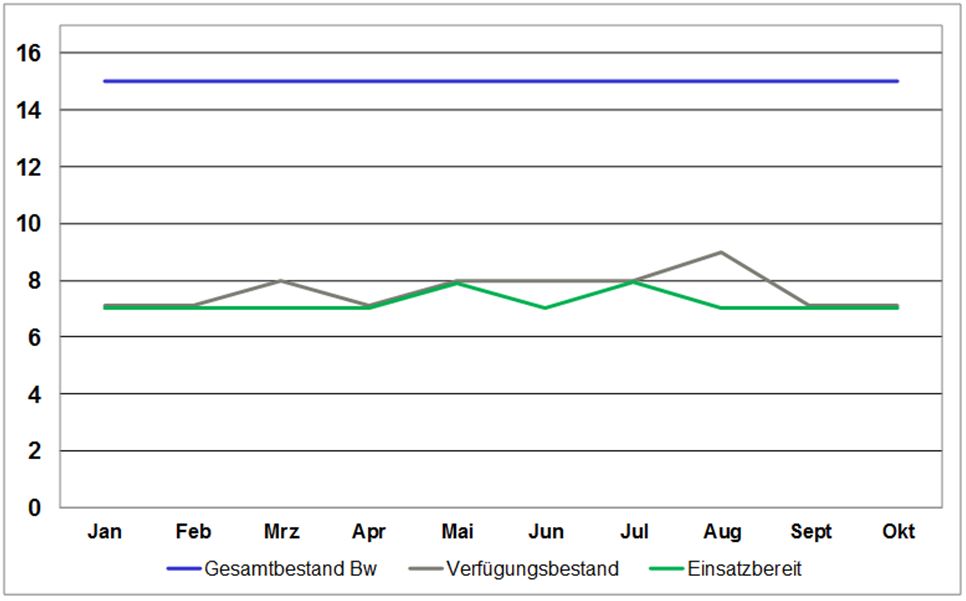
The Bundeswehr currently has 15 Frigates in the total inventory (incl. trials, depot or shipyard). However, this includes 5 frigates that have already been decommissioned and whose utilisation has not yet been decided. These ships can no longer be utilised by the navy.
Of the ten active Frigates three are attributable to the class F124four to the class F123 and three to the class F122. The Frigates F124 are primarily deployed in the air defence role, including anti-aircraft missile capability, while the other two classes focus on submarine hunting. All Frigates contribute to three-dimensional naval warfare on, above and under water. They are equipped to carry up to two on-board helicopters.
The material availability of the units in recent months is rated as good. Of the ten Frigates seven units are currently available. These are either deployed, undergoing pre-deployment or post-deployment preparation or are tied up in mission-related obligations or are being prepared for a shipyard period. The implementation of the long-term projects to maintain operational readiness for the Frigates F 123 (capability customisation of the command and weapon deployment system) and F 124 (Hardware Regeneration Combat Direction System) is currently proceeding according to plan.
Task force provider class 702
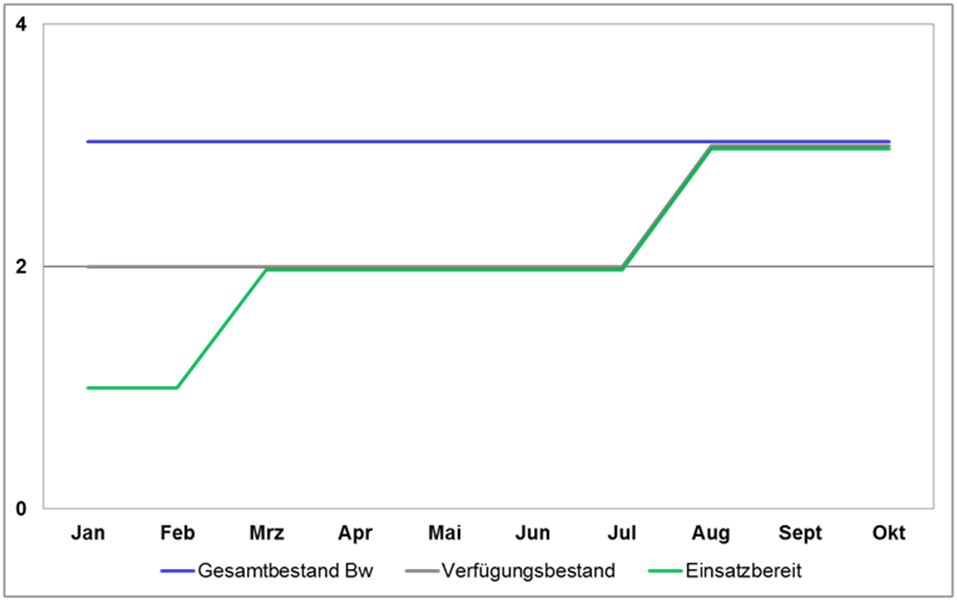
The Bundeswehr currently has 3 class 702 task force supply vessels (EGV). The EGVs have the special capability to support maritime task forces with supplies, provisions, consumables and ammunition. They can embark up to two SEA KING MK 41 helicopters for transport and rescue tasks. The Marine Emergency Rescue Centre (MERZ) provides sea-based medical support for ROLE 2.
A MERZ is currently unavailable due to a fire in a civilian maintenance facility. Investigations into regaining this capability have been initiated - the results are expected at the end of 2015. However, the temporary partial loss of this capability has not yet had any impact on the provision of medical support for operational duties. The material availability of the three EGV Class 702s available to the Navy has improved continuously from 1 to 3 since January 2015 and can therefore currently be rated as very good. Due to the small number of units, the curve shows a positive but erratic trend.
All three EGVs are currently in an operational state and are either being deployed or are preparing for deployment from January 2016.
On-board helicopter SEA KING MK 41
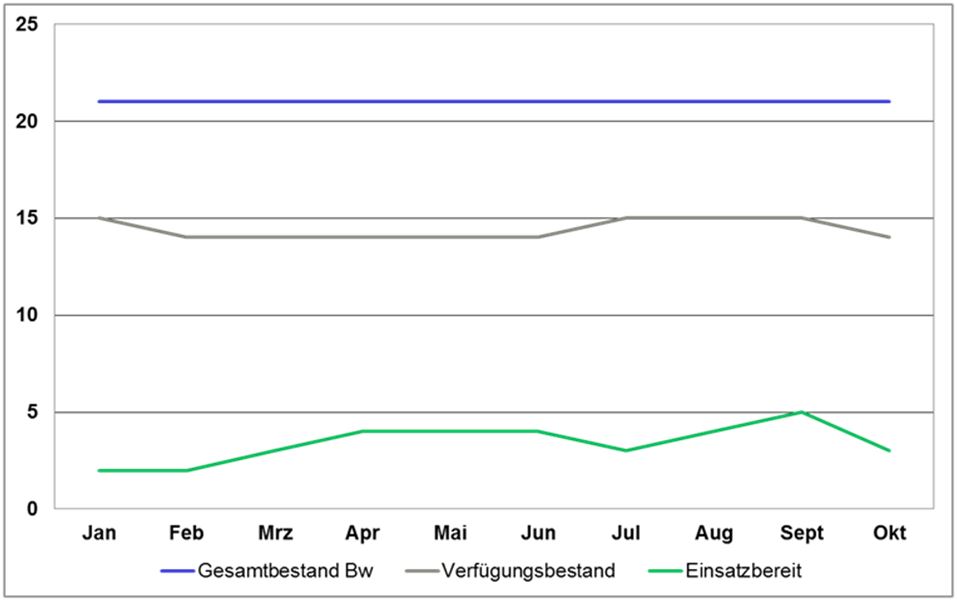
The WaSys SEA KING MK 41 is deployed both as a first-degree SAR asset from land and embarked on the task force supply ships for operational missions. The Bundeswehr currently has a total of 21 SEA KING MK 41s.
The average level of material readiness achieved last year is below the minimum operational requirement of six operationally ready aircraft for deployment and training. Due to the very long service life of the aircraft (maintenance in service), this level of readiness could only be maintained with great effort, partly due to the low availability of spare parts.
The framework agreement between the BMVI and BMVg results in the obligation to provide the International Civil Aviation Organisation (ICAO) SAR service. In addition, the Navy provides military SAR service at sea with this system. Both obligations could be fulfilled with the materially operational aircraft. Additional tasks, such as operational embarkations on board EGVs or support tasks for the special forces of the German Armed Forces, could be carried out in individual cases during exercises. Priority will initially be given to all measures that succeed in avoiding capability gaps and loss of expertise and ensuring the necessary continued operation of SEA KING until 2023.
Corvette 130
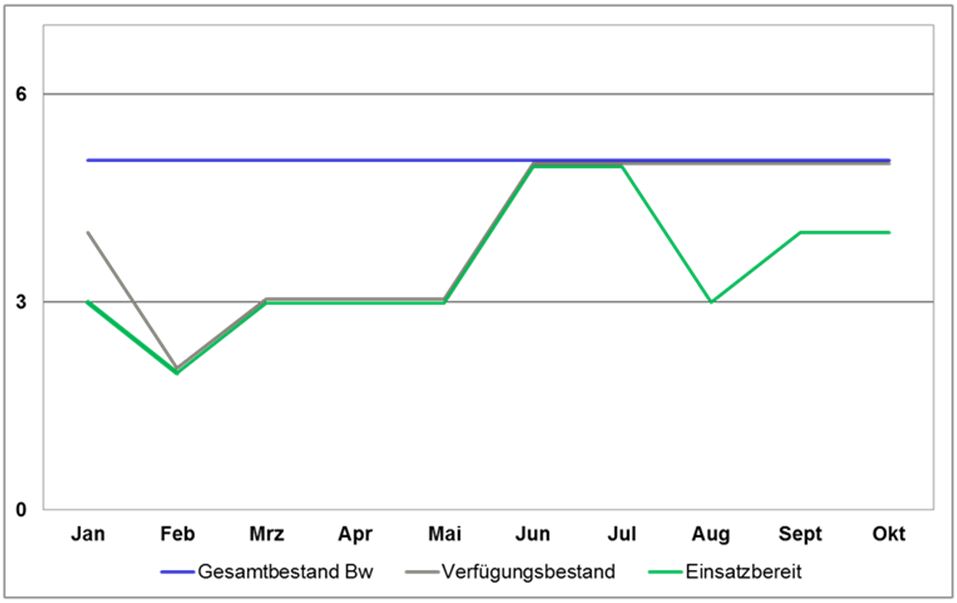
The total inventory currently amounts to 5 systems. These five K130 corvettes are capable of surface warfare in marginal seas and coastal waters. The RBS 15 MK 3 missile also enables the units to engage long-range targets on land as part of joint operations. The material readiness of the corvettes developed positively during the reporting period.
On average, three to four units were available ready for deployment. From a material point of view, the targets for the sustainable manning of a mission (UNIFIL), including the necessary preparation and follow-up work, can therefore be met. The current above-average availability also allows the corvettes to be deployed intensively and flexibly (deployment time platform approx. 12 months with crew rotation). In addition to an ongoing deployment, a further, time-limited individual deployment of a unit can therefore be made possible.
Submarine class 212A
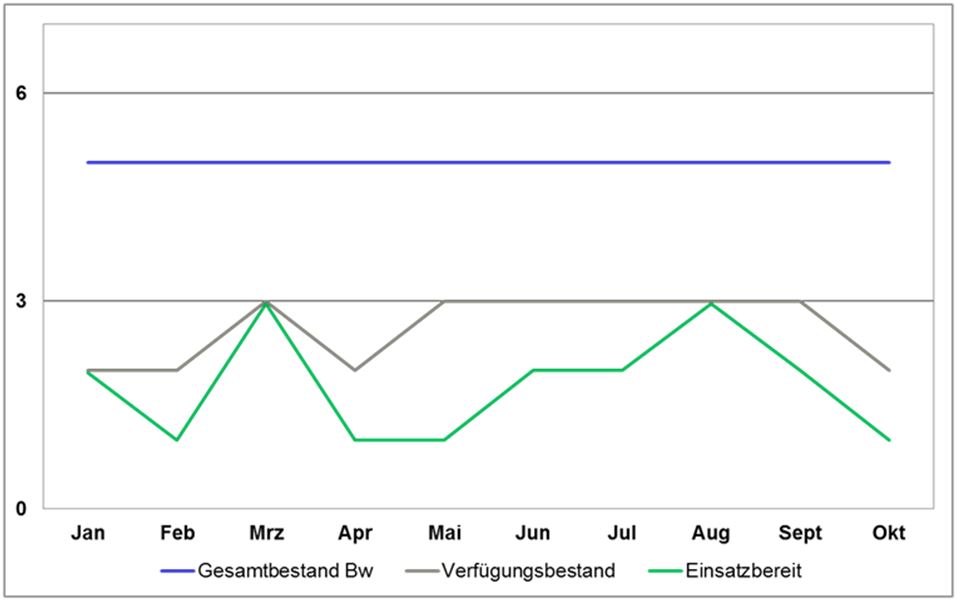
The Bundeswehr currently has a total of 5 systems. The navy currently has four class 212A submarines of the 1st batch and one boat of the 2nd batch. The boats are particularly capable of fighting sea targets, submarine hunting and covert reconnaissance. The 2nd batch boat has also been further developed and improved for the deployment of special forces and for co-operation with surface and naval air forces.
The average availability is currently the result of the time-intensive repair phases compared to the surface units as well as the ongoing takeover and testing phases. The material operational readiness is assessed as sufficient. The continuous provision of a submarine for the NATO RESPONSE FORCE can be ensured.
Mine countermeasure units class 332/333/352
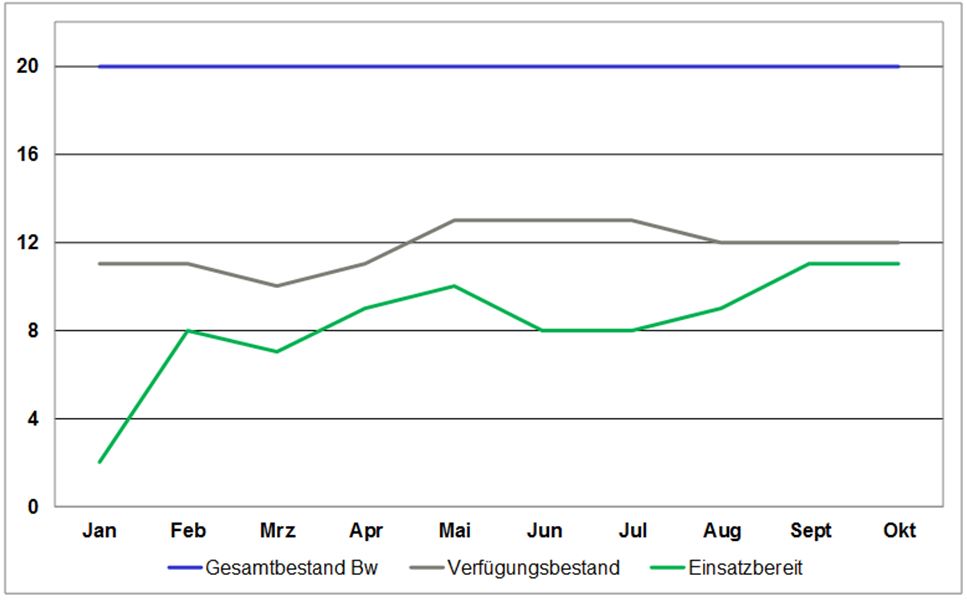
The Bundeswehr currently has a total of 20 mine countermeasure units. This includes 5 boats that have already been decommissioned and whose utilisation has not yet been decided. These boats can no longer be used by the navy. Of the 15 active mine countermeasure units, ten mine countermeasure units are class 332, two of which are specially equipped as mine-sweeping boats. In addition, there are three Class 352 units and two Class 333 units that are no longer operational.
In the case of the hollow-deck boats 352, mines are cleared using unmanned remote-controlled drones (simulation rooms); in the case of the minehunting boats 332, mines are currently still located using an integrated sonar system and countered using an underwater drone or by mine divers. There are currently 12 mine countermeasure units available. Most of the 11 operationally ready units are either tied up in similar duties or are preparing to take over the tasks in 2016 or are currently in the post-deployment phase. The level of operational readiness is good.
In the past year, the navy was able to fulfil all operational orders placed on the mine countermeasures units as well as international cooperation projects (with a focus on the Baltic Sea area).
Fleet service boat class 432
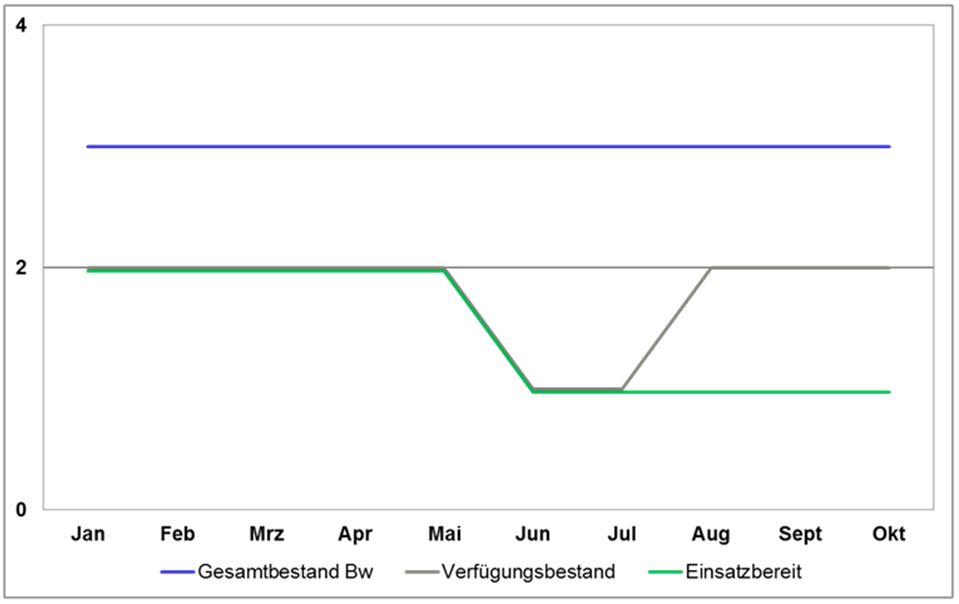
The Bundeswehr currently has a total of 3 systems. The Class 423 fleet service boats are maritime reconnaissance units with special capabilities for telecommunications and signalling reconnaissance. This class is characterised by its long range, seaworthiness and long sea endurance, which also make it suitable for use outside the North Sea and Baltic Sea.
Due to its role as a strategic reconnaissance asset, operation and operational planning are mapped in different areas. As part of an overall TSK approach, only the operation of the platform is the responsibility of the navy. The reconnaissance mission is carried out by the Defence Force Base, with the personnel for the mission-specific shipboard deployment teams being provided by the Strategic Reconnaissance Command (KSA).
With an average availability of one to two units, the targets for the continuous and sustainable provision of a unit for operational tasks could and can be met without restriction.
P-3C ORION maritime patrol aircraft
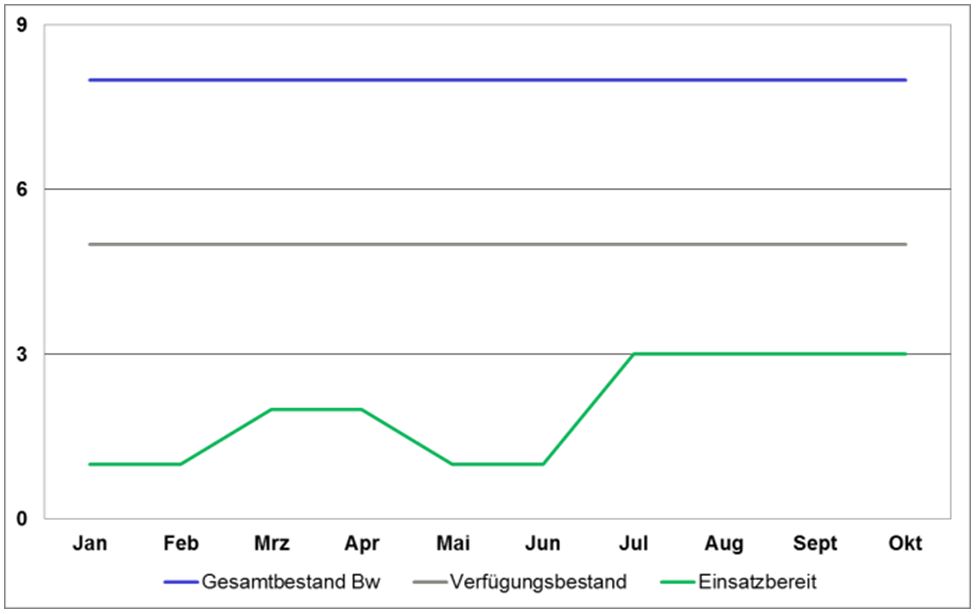
The Bundeswehr currently has a total of 8 systems. The difference to the available inventory is due to systems undergoing retrofit measures. The P-3C ORION maritime patrol aircraft complement the navy's maritime capabilities with a multi-layered airborne weapon system equipped with an extraordinary range of capabilities.
In addition to its main tasks of maritime reconnaissance and anti-submarine warfare, the aircraft can also be deployed as part of a joint force at the sea/land interface and over land thanks to its versatile sensor and communications equipment, and also offers a partial capability for direct support of land and special forces.
The number of operational systems has stabilised over the last few months at an average of three aircraft. This means that both the ongoing deployment obligations as part of EU NAVFOR Operation ATALANTA (6 months total deployment time during the inter-monsoon phases) and the necessary measures to maintain capabilities can be fulfilled.
In addition, P-3C ORION aircraft regularly take part in ASSURANCE missions in the Baltic Sea area (on average one mission per week) as part of the NATO READINESS ACTION PLAN (RAP). They have also demonstrated their capabilities in numerous high-intensity manoeuvres - most recently TRIDENT JUNCTURE.
On-board helicopter SEA LYNX MK 88A
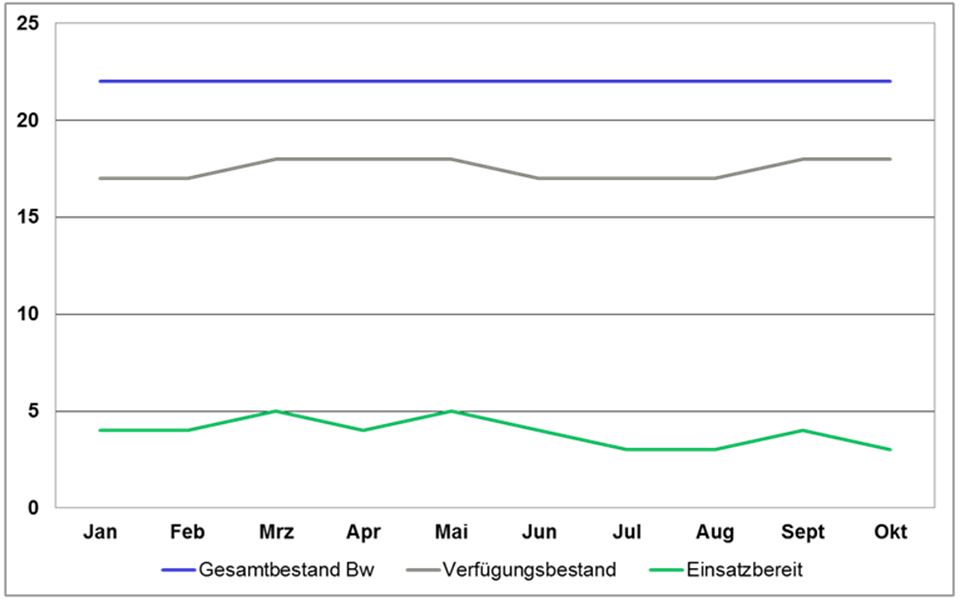
The Bundeswehr currently has a total of 22 systems. The SEA LYNX MK 88A weapon system is used as an on-board helicopter on the Frigates deployed. As a multi-role, multifunctional helicopter, it can be used as a sensor for surface and underwater situation awareness, as a weapon carrier (with torpedo or heavy machine gun) and as a sea-based logistical support unit for transport and SAR tasks, depending on the specific mission equipment.
The operational readiness of the weapon system has stabilised at an average level of four operationally ready aircraft. This figure is well below the current minimum operational requirement of at least six operationally ready aircraft for deployment and training.
Despite the crack problem on the tail boom, it was possible to realise two operational embarkations during the reporting period. The remaining flight hours were used for regeneration training.
-----------------------------------------------------
The entire report on the operational readiness of the Bundeswehr can be read with mixed feelings: Many weapon systems have a clear status that is at least acceptable or better. For some systems, the situation can almost be described as desolate - it is striking that there are deficits in flying equipment in particular, regardless of which branch of the armed forces uses it. The situation is very similar in the navy.
The reported number of 62 floating units, a new low in the history of the navy, should not leave a lasting impression. The German Navy already has several new ships (F125, MKS180) currently or soon in the pipeline, or is planning new systems (MBT naval fuel transporters, joint support ships). It is also a fact that, despite all the known problems, the procurement of new ships has never been as disastrous as the time and cost situation for the A400M and Eurofighter, for example. On the other hand, the material situation says nothing about the level of training and availability of the crews - what use is an operationally ready Frigate if the crew is not?
We think that the German Navy does not leave a bad impression despite all the known problems. What does the community say?
[/et_pb_text][/et_pb_column][/et_pb_row][/et_pb_section]

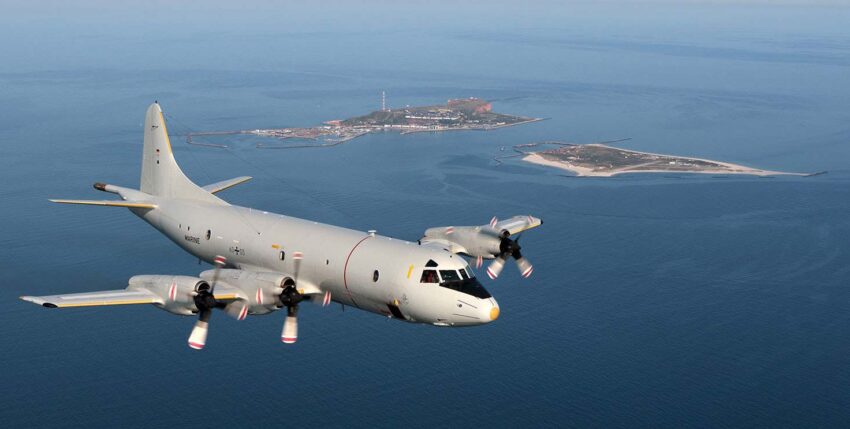









7 responses
Every country has the army it would have needed in the last war. Our last "war" was Afghanistan. The German army is geared towards this. Since the end of the Cold War, the navy has been "worn out" in years of deployments (Sharp Guard, OAE, UNIFIL, ATALANTA, etc.) beyond what was conceptually required. Nevertheless, DEU has always managed to maintain our commitments to NATO's standing task forces. We are certainly one of the most reliable troop providers in these 4 (!) organisations.
in the past decades. However, all this comes at a high price: equipment and personnel are "fatigued" and there is no operational break in sight. On the contrary: new security policy challenges are emerging that demand ADDITIONAL commitment...
Sometimes quantity also harbours quality!
The statement that the "minimum operational requirement" for the SEALYNX Mk 88A helicopters is only 6 operationally clear helicopters is incomprehensible. If the clear status of the frigates is 7 out of 10, 14 BHS would be required for their actual operational capability alone, as a frigate without BHS can only be used to a very limited extent (e.g. for sea rescue in the Mediterranean) at the present time. In addition, there is a need for operational BHS for regeneration training and for tactical training and further training at Naval Air Wing 5 in Nordholz. In total, the weapon system was procured for an annual requirement of approx. 6500 flight hours. With the figures achieved in recent years, the fleet cannot even begin to cover its requirements. It is astonishing that a lot of money is repeatedly spent on new procurements, even though we cannot get the existing systems ready for deployment, which would cost significantly less money.
A report whose statements are suitable for publication before Christmas. Or how should one understand the final paragraph that new ships are currently or will soon be arriving? Wishful thinking is recognisable here. The MKS 180 is in the EU-wide tendering process. What does soon mean here?
The F125 has its next colour problems. The drive and new software will be added at the latest when the test run begins. What does "current" mean here?
In 2016, the active frigates will continue to be "phased out" without any new ships being added. The Mediterranean sends its regards. We don't even want to start talking about helicopters and MPAs.
In my own active time, there was once a status report in which the fleet could still be operated just adequately.
There was always whitewashing; plain speaking only on board by the crews.
Are there any insiders who have their own opinion on this report? Such official announcements often tend to write things nicely. I suspect that this has led to Schwenn's strong reaction. Looking forward to further statements
waits
the sailor
Please, I haven't read such rubbish for a long time. Very poorly researched. Share, definitely not.
May I ask what this harsh criticism refers to, the italicised text of the BMVg report or the blog post as a whole?
Greetings
from the sailor
To make it easier to understand, we have again explicitly presented the extract from the Inspector General's report; the graphics are also taken directly from the BMVg report and labelled accordingly.